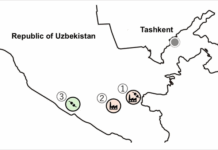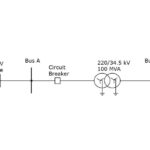
The smart lighting market is estimated to grow from USD 7.93 billion in 2018 to USD 20.98 billion by 2023, at a CAGR of 21.50% between 2018 and 2023. The major factors driving the growth of the smart lighting market include modernization and development of infrastructure to transform cities into smart cities, need for energy-efficient lighting systems, increasing adoption and decreasing cost of LEDs, increased demand for intelligent solutions for street lighting systems, and growing awareness about energy savings among consumers and governments worldwide.
Smart Lighting Market for Services to grow
Services play a major role before and after the installation of smart lighting systems. This segment comprises design and engineering services, installation service, and post-installation services (maintenance, and support and monitoring services). The growth of the smart lighting market for services is mainly attributed to the expected high rate of adoption of smart street lighting systems for energy conservation and ecological safety during the forecast period. Post-installation services consist of maintenance, support, and monitoring services for smart lighting systems. Among these, maintenance and support services require high expenditure. Post-installation services consist of maintenance and support for smart lighting systems to ensure long life of the luminaires and lamps, with minimum energy consumption and maximum efficiency.
Indoor Application to Hold Larger Share of Smart Lighting
Indoor application (residential, commercial, and industrial) is expected to hold a larger size of the smart lighting market during the forecast period. In residential applications, smart lighting can be installed according to the requirement of a particular room or an entire house. The incorporation of wireless technology in smart lightings would help the market for residential indoor application to grow at a high rate. The commercial application of smart lighting includes the implementation of these lightings in offices, retail shops, shopping malls, and hospitality infrastructure. Reducing energy consumption has become a major objective for building owners, governments, utilities, and other stakeholders. Replacing existing lights with more energy-efficient lighting sources, such as LEDs, is one of the ways to reduce massive energy consumption; however, it is a small-scale solution for the issue. On a large scale, energy consumption can be reduced by turning the lights off when not required, optimizing light levels to suit the workers’/occupants’ needs, and reducing the overall demand for lighting energy. These measures come under smart lighting arrangement, which is the best way to ensure the automatic reduction in energy consumed in the lighting task.
Smart Lighting Market for Wireless Connectivity to Grow
The use of lightings based on wireless technology eliminates the wire usage, thereby, abolishing the need for installation and protection of cables. Therefore, the wireless smart lighting systems have significantly low cost. Also, the wireless system is flexible in nature. Thus, sensors equipped with wireless communication can be organized into an autonomous network, which makes updating, adding, moving, and replacing of sensors easy after the initial installation. The developments in wireless technologies are expected to drive the growth of the smart lighting market for the wireless communication protocols.
APAC to Hold Largest Share of Smart Lighting Market by 2023
The smart lighting market in APAC is expected to grow at the highest CAGR during the forecast period. The region provides the enormous growth potential for the market players, and these smart lighting systems are likely to be accepted by consumers as an integral part of a digitalized household. The increased construction activities in APAC are contributing significantly to the growth of the smart lighting market in the region. The expected construction of ~200 million homes in China and 18 million homes in India is likely to provide several new opportunities for energy-efficient lighting and home automation in the next few years in this region. Moreover, the emerging economies of China and India are having a positive impact on the overall market in APAC. Rising government expenditure on public infrastructure, increasing adoption of energy-efficient lighting systems are the major driving factors for the growth of smart lighting in APAC.
Some of the major players in the smart lighting market are Philips Lighting (Netherlands), Hafele Group (Germany), Acuity Brands (US), OSRAM (Germany), Cree (US), Hubbell (US), Zumtobel Group (Austria), Honeywell (US), Legrand (France), Eaton (Ireland), Lutron Electronics (US), and General Electric (US).



















